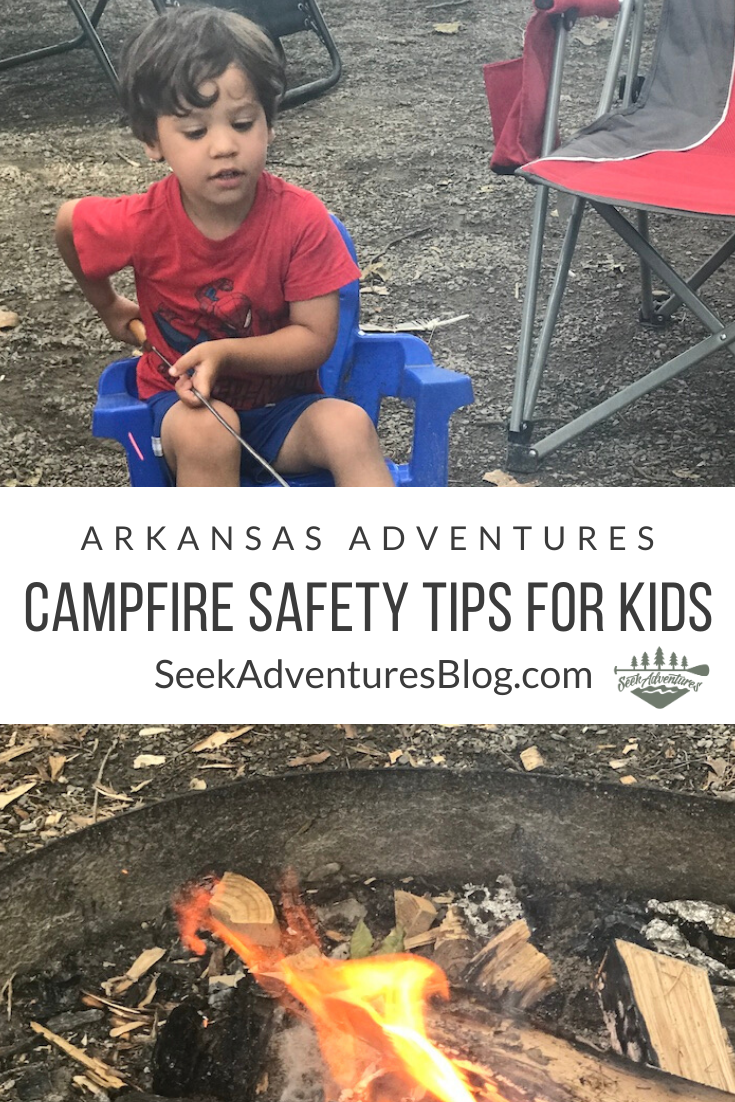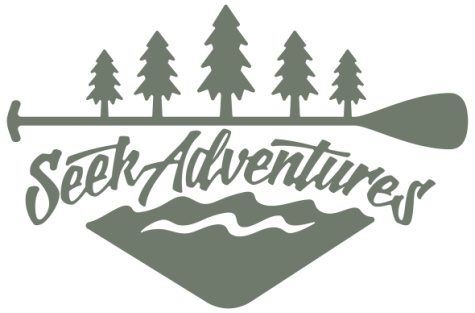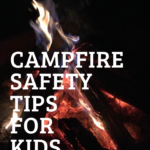One of the best parts of camping is sitting around the campfire singing songs, roasting marshmallows, and enjoying each other’s company. When children are present — having a campfire can be a risky adventure. Fire safety is always important and these Kids Campfire Safety Tips will help protect your children while you enjoy an evening around the campfire.
This post contains affiliate ads. This allows us to earn fees for qualifying purchases.
George was barely walking when we went on our first family camping trip. He was happy to be on the ground playing with rocks and a pile of sand toys or hanging out in a playpen. I didn’t have to worry about him getting too close to the fire because he was still at turtle speed. A few months later, George was walking more and boy, was he fast! Keeping him safe around the campfire became a much bigger concern.
It was time to take some steps to ensure his safety around the campfire.
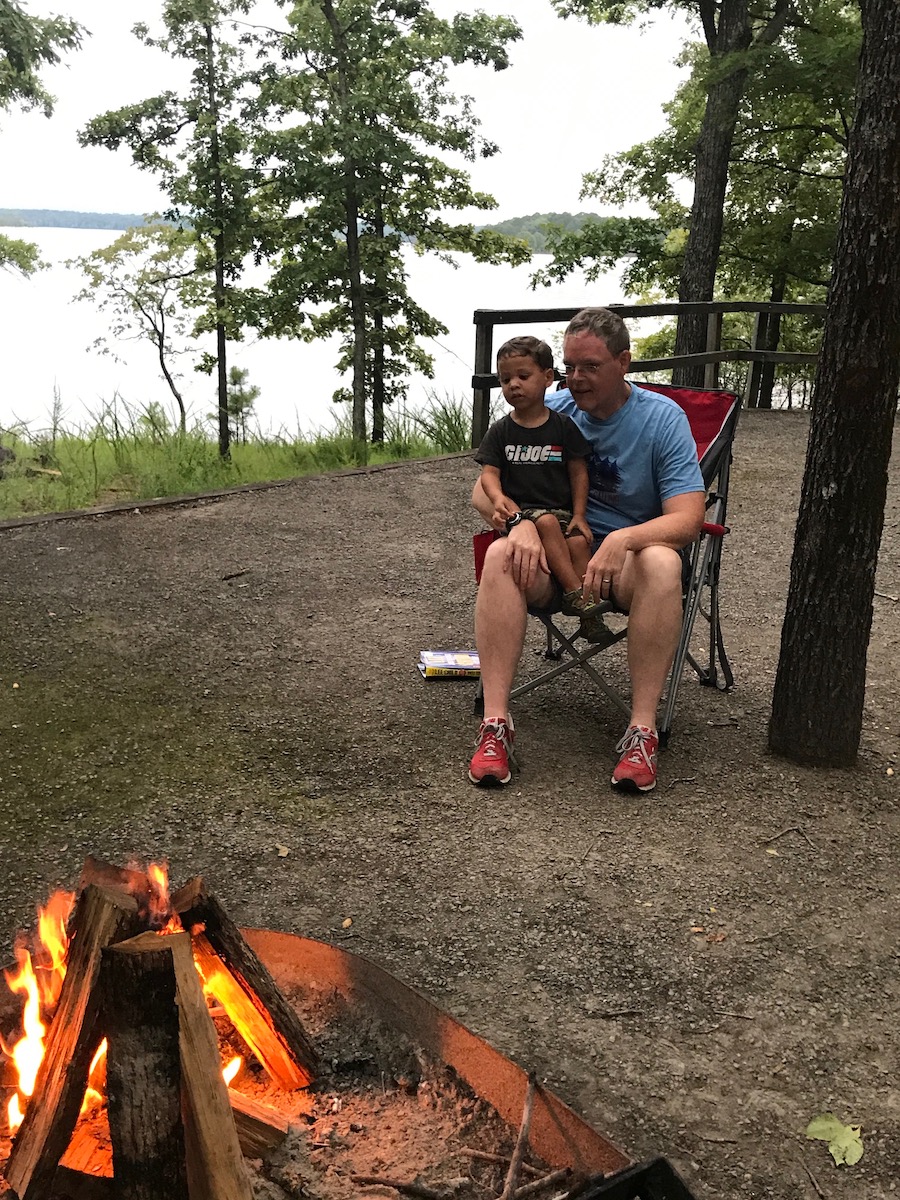
5 Campfire Safety Tips for Kids
- Talk about fire safety. Fire safety conversations should happen before you head to the campground. Campfire safety tips are best discussed at home before you ever encounter a campfire. Most babies and toddlers are at least familiar with the word “hot” and understand that they don’t want to touch something hot, but unless you have a fireplace or a fire pit at home, the campfire may be the first real experience your child has with fire. Talking about your upcoming camping trip is a great way to breach the subject. Discuss with your child what a campfire may look like and how you will be using the campfire for cooking, warmth and light. Smokey the Bear has some great tips and activities about fire safety and picture books about camping can also be a valuable resource. You can find a list of our favorite kid’s books about camping here.
- Clean up around the campfire circle. One of the campgrounds that we frequent has a heavy iron cooking grate attached to the fire ring. It folds out if you don’t need it which is super convenient. However, if you are like me, you will trip on that thing 100 times before the weekend is over. Especially when kids are present, anything that can cause a tripping hazard near the fire should be removed. Things to look for include extra firewood, roots or rocks near the fire circle, toys, cooking equipment and even camping chairs.Make sure you have an area of at least 6 feet around the campfire that remains clear of any potential hazards or obstacles.
- Create a barrier around the campfire. You could bring a toddler fence and erect it around the campfire but that’s probably not all that practical and it’s certainly not enjoyable for everyone else at the campsite. The barrier around the campfire is just intended to serve as a visual reminder that the area beyond the barrier is dangerous so a ring of logs or large stones should suffice.
- Don’t allow playing with the fire. Tossing objects into the fire and poking at it can be dangerous and usually require children to be closer to the fire than they need to be. Although this seems like fun, it’s a bad habit to get into, especially for younger children.
- Supervise your children. We camp as a way to enjoy an inexpensive vacation. But being on vacation doesn’t relieve me of my parenting duties. We can tell our children 1000 times that fires are dangerous. We can read books and build barriers but we all know that toddlers will test us the moment we turn our backs. They aren’t being naughty, they are just trying to learn about the world around them. Supervision, CONSTANT supervision, is the one tool that you have that can be the most beneficial to your child’s safety.Camping has a lot of chores that need to be done and each requires a fair amount of attention. If you must step away or are distracted by another task, make sure to verbally tag in your partner so that one person is always 100% focused on your kids. Camping with a toddler requires a fair amount of give and take and trading off roles lets everyone enjoy their time.
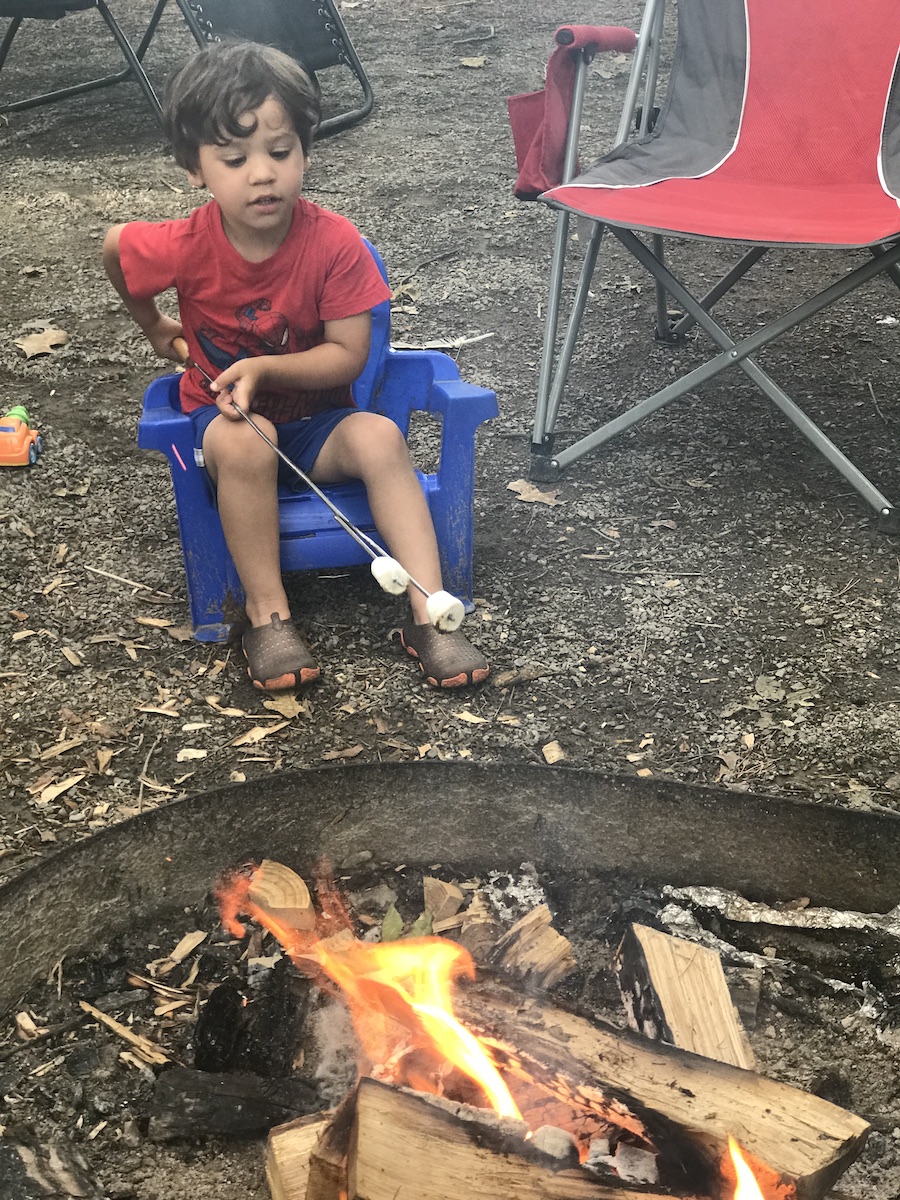
3 Tips for a Safe Campfire
In addition to keeping little ones safe, it is important to ensure your own safety around the campfire.
- Check local restrictions regarding campfires. Many campgrounds have fire rings at the campsite. Campgrounds that do not provide rings likely have specific rules about where and how to build a fire. This is especially important to know if you are backpacking or dispersed camping. Always check before you build a fire.
- Keep the fire small. Smaller fires are easier to keep an eye on and to contain. Larger fires have the potential to reach brush or low hanging limbs and can quickly get out of control.
- Keep water, a shovel, and a fire extinguisher handy. If your campsite doesn’t have running water, keep a bucket of water nearby. This can be used to extinguish the fire before bed but could also be used in an emergency situation.
- Never leave a campfire unattended. Always extinguish your fire completely before going to bed or if you need to leave your campsite.
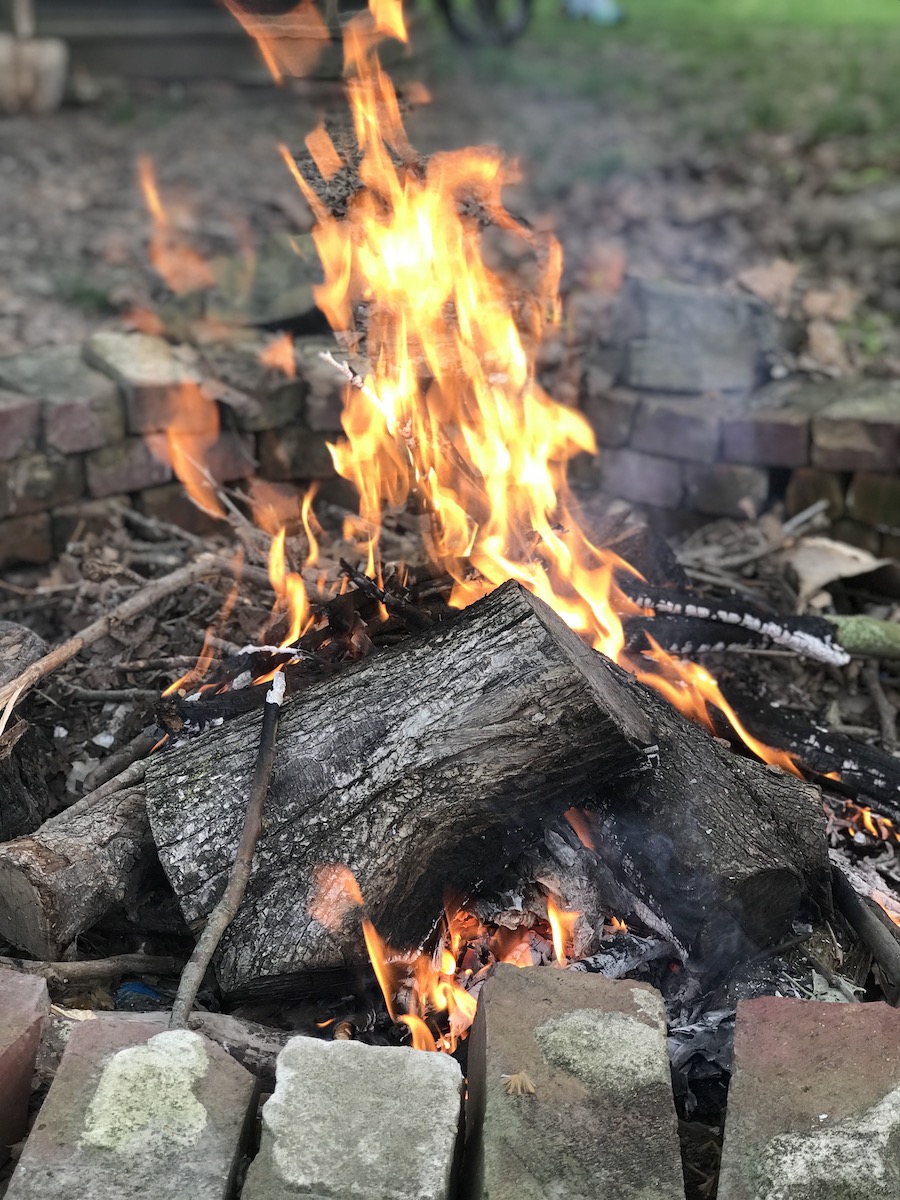
Tools for a Safer Campfire Experience
Having the right tools and equipment can always make a job easier. Campfires are an essential part of camping so you probably want to have a few tools handy. Here are a few of the tools we love!
Collapsible buckets are great space savers and they are so versatile around the campsite. This one holds a little over one gallon which is usually sufficient enough for putting out a small campfire. They also make a 2.5-gallon capacity bucket.
A folding camp shovel is a versatile tool. This camp shovel allows you to dig, saw, chop and pick. It can be used to clean ashes out of a fire or to cover burning coals with dirt to extinguish them.
A small axe is perfect for chopping firewood and kindling. You can also use it to remove low hanging branches for fire safety. This small camping axe is 14″ long and comes with a protective sheath.
Always be prepared for an emergency. If a fire gets out of control the situation can go from bad to worse in a heartbeat. Have a bottle or two of fire suppressants on hand, just in case!
Read Next
- How to Build the Perfect Campfire
- Campfire S’mores Cones & The Perfect Camping Dessert for Tiny Hands
- Snake Safety for Kids and Families
- Water Safety Tips for Toddlers and Children
- How to Identify Poison Ivy
Pin these Kids Campfire Safety Tips to Pinterest to save them for later.
